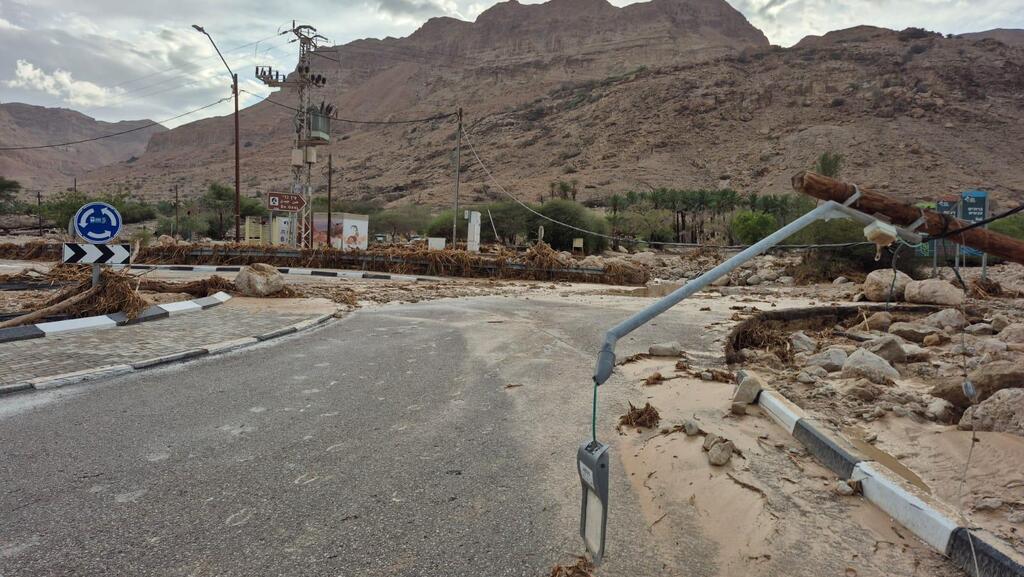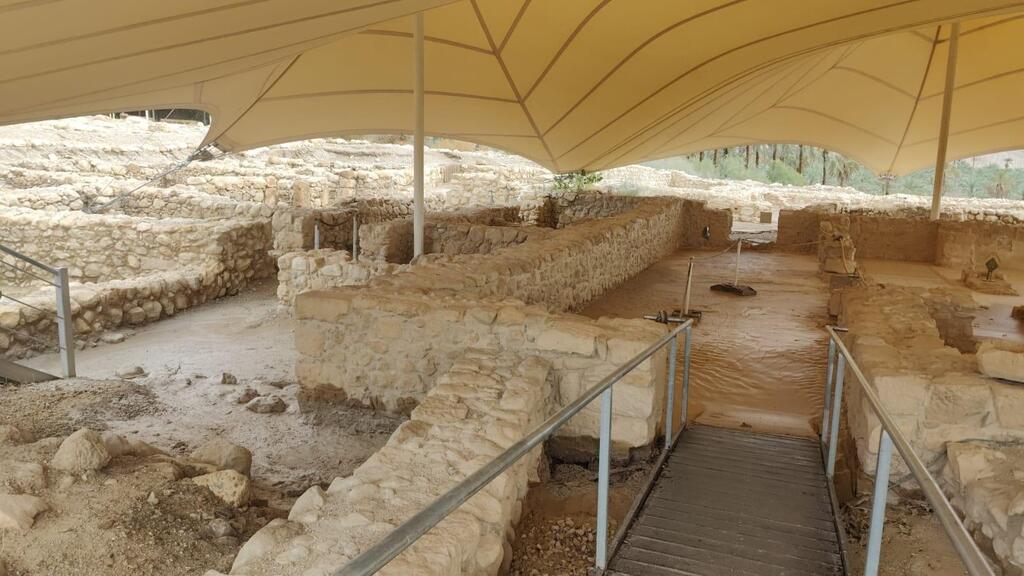A rare and powerful flash flood that hit southern Israel on Sunday caused extensive damage to the Ein Gedi Nature Reserve.
According to the Israel Nature and Parks Authority, the flood was an extreme event, unlike anything seen in the area for many years. Approximately 35 mm of rain fell in a very short period.
The Ein Gedi Nature Reserve
(Video: Israel Nature and Parks Authority)
A preliminary assessment conducted after the flood revealed widespread and significant damage to the reserve. Many hiking trails were completely washed away, while others suffered major erosion and damage due to the force of the water. The ancient synagogue at the site was flooded and will require preservation, restoration and rehabilitation efforts to repair the damage.
All support infrastructure in the reserve — including footbridges, trails, railings, steps, and signage — was severely affected. Roads leading to and within the reserve were also damaged and will need to be repaired.
3 View gallery


Erosion at the entrance to the Ein Gedi Nature Reserve
(Photo: Israel Nature and Parks Authority)
The parks authority added that all basic infrastructure was hit, including power, sewage and water systems, as well as public restrooms. The powerful flood also damaged the reserve’s unique plant life. After completing a full damage assessment, the Nature and Parks Authority will begin restoration work. Until those efforts are complete, the reserve will remain closed to visitors.
Located in the heart of the Judean Desert, Ein Gedi Nature Reserve stretches across 14,350 dunams (roughly 3,500 acres) along the edge of the Judean cliffs, adjacent to Kibbutz Ein Gedi. The reserve encompasses the canyons of Nahal David and Nahal Arugot — two perennial streams — and the high cliffs between them. Four springs flow year-round within the reserve, sustaining a unique desert oasis.
Ein Gedi is the largest oasis in Israel. Its lush vegetation and flowing streams provide a vital habitat for a large population of ibexes, which find their primary refuge there. Until several decades ago, the reserve also supported a small population of leopards. Rare and endangered plants, particularly species of tropical-arid origin such as Anastatica hierochuntica and Maerua crassifolia, also grow in the area.
<< Get the Ynetnews app on your smartphone: Google Play: https://bit.ly/4eJ37pE | Apple App Store: https://bit.ly/3ZL7iNv >>
Ein Gedi’s natural beauty has long made it a popular destination for hikers and tourists. In 2024, approximately 318,000 people visited the reserve. In 2019, a record year for tourism, around 700,000 visitors — including many from abroad — came to Ein Gedi.






